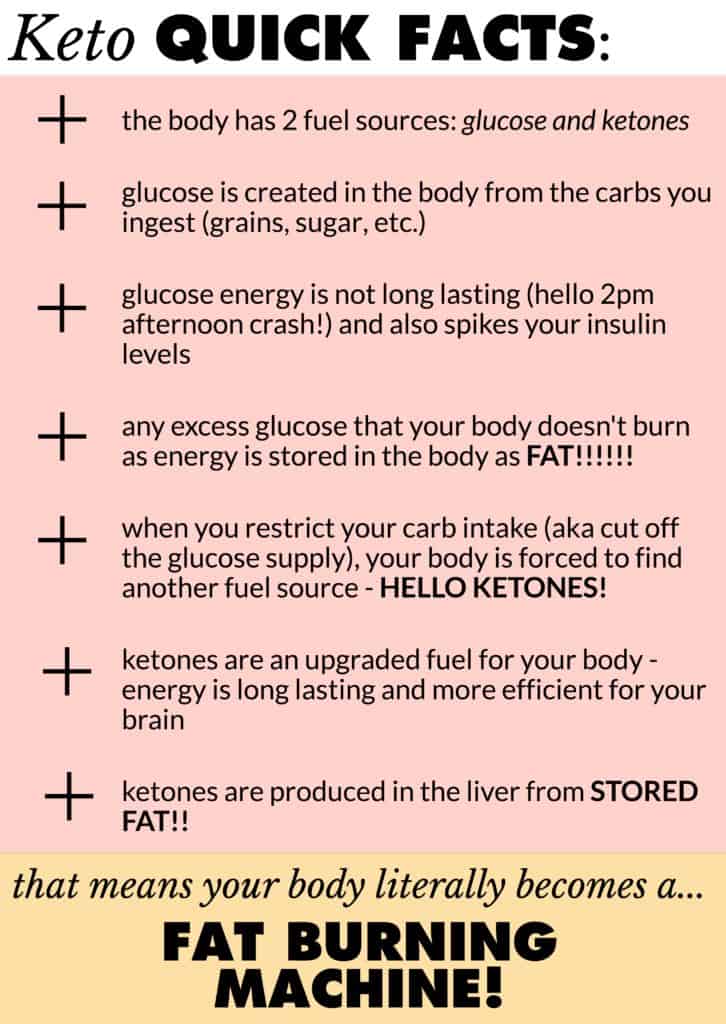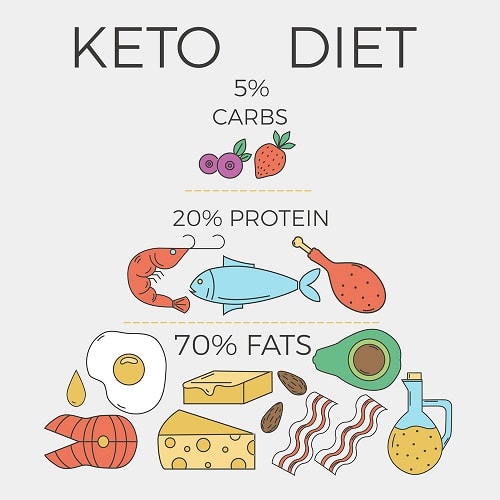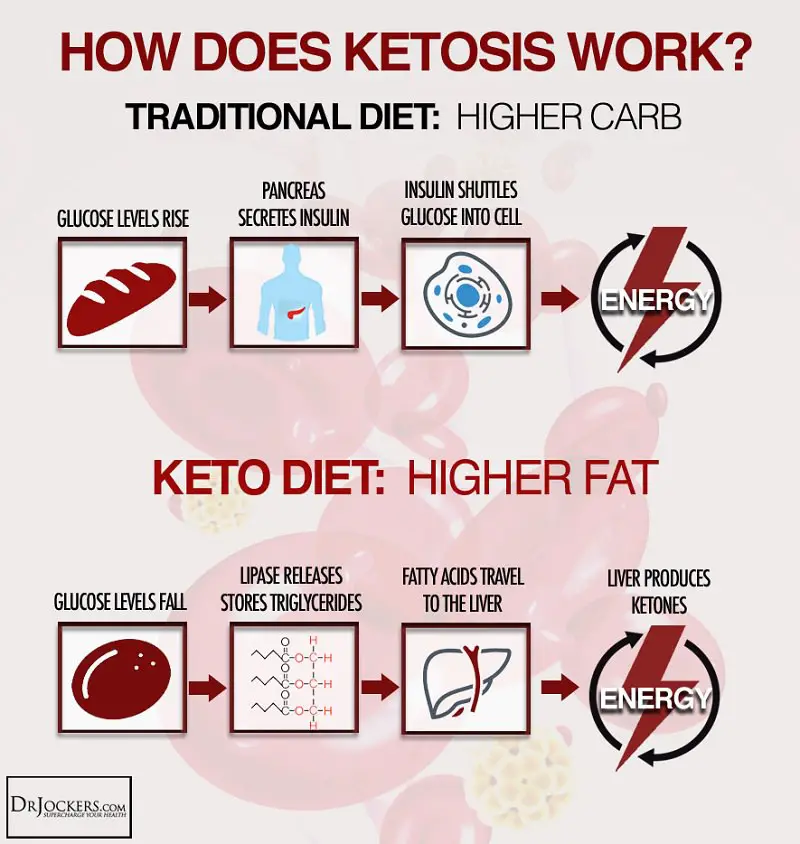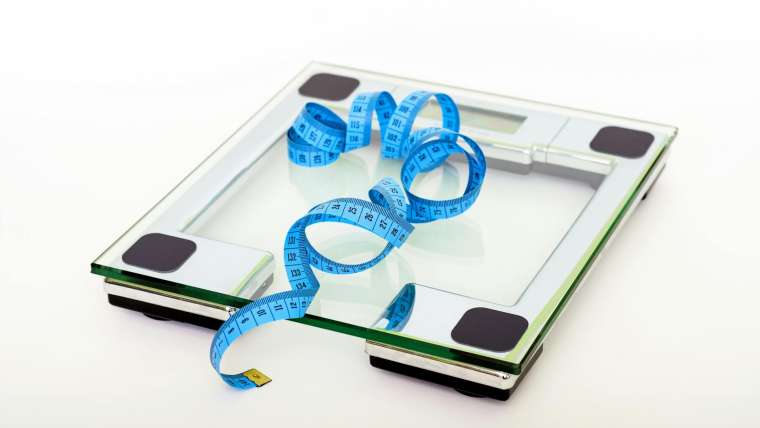Uncover the secrets to success on the Keto diet with our comprehensive beginner’s guide. Transform your health today!
Table of Contents
- Introduction: What is the Keto Diet?
- Why Do People Choose Keto?
- Your Body on Keto: How It Works
- Getting Started with Keto
- Keto Diet Menu for Beginners
- Making Keto Easy and Fun
- Tips for Sticking to Keto
- Keto Myths and Facts
- Health and Keto: What to Watch Out For
- Keto and Family: Involving Everyone
- Summary: Your Keto Starter Pack
- FAQs
Introduction: What is the Keto Diet?
Have you ever heard of the keto diet? It’s a special way of eating that focuses on eating more fats and fewer carbs. Sounds interesting, right? Let’s dive into what the keto diet is all about in a way that’s easy to understand.
The Basics of Keto
The keto diet, short for ketogenic diet, is all about changing the way you eat by enjoying foods that are rich in fats like avocados, butter, and cheese, while cutting down on carbs like bread, pasta, and sugary treats. This shift in eating habits puts your body in a state called ketosis, where it burns fat for energy instead of carbs. Pretty cool, isn’t it?
Why Do People Choose Keto?
People choose the keto diet for different reasons. Some want to be healthier, while others want to change how they eat. Let’s take a look at why the keto diet is appealing to many.
One reason is that the keto diet can help people lose weight. By eating fewer carbs and more fats, the body goes into a state called ketosis, where it burns fat for energy instead of carbs. This can lead to weight loss for some people.
Another reason is that the keto diet can help regulate blood sugar levels. By reducing the intake of carbs, the body has less sugar to process, which can be beneficial for those with conditions like diabetes.
Furthermore, some people choose keto because it can improve mental focus and clarity. When the body uses fat for fuel, the brain receives a steady supply of energy, which can enhance cognitive function.
Additionally, the keto diet has been shown to reduce inflammation in the body, which can be helpful for those with conditions like arthritis. By cutting out inflammatory foods like sugars and processed carbohydrates, the body can function better and feel healthier.
Your Body on Keto: How It Works
When you start following the keto diet, your body undergoes some fascinating changes. Normally, our bodies use carbohydrates (from foods like bread, pasta, and cereal) to produce energy. But on the keto diet, things work a little differently.

Image courtesy of cleanketolifestyle.com via Google Images
The Basics of Keto
Instead of relying on carbs for fuel, the keto diet encourages eating lots of healthy fats, like avocados, butter, and nuts. When you eat fewer carbs and more fats, your body enters a state called ketosis. This means it starts using fat for energy instead of carbs.
Imagine your body as a car. Normally, it runs on gasoline (carbs), but on keto, it switches to using a cleaner fuel like electricity (fat). This shift helps burn stored fat in your body, leading to weight loss and a boost in energy.
By understanding how your body changes on the keto diet, you can see why it’s an effective way to achieve your health goals. Plus, who wouldn’t want to be powered by the good stuff (fats) instead of the not-so-healthy stuff (carbs)?
Getting Started with Keto
Starting the keto diet can seem daunting, but with a little planning and preparation, you can ease into this new way of eating. Here are some tips on how to get started with your beginner keto diet plan:
Planning Your Meals
One of the key elements of success on the keto diet is meal planning. Sit down and think about what delicious foods you can eat that are low in carbohydrates and high in fats. Make a list of those foods and plan out your meals for the week. This will help you stay on track and make sure you have keto-friendly options available to you.
What to Eat and Avoid
When following a beginner keto diet plan, focus on eating foods that are rich in healthy fats like avocados, olive oil, and nuts. Incorporate moderate amounts of protein from sources like chicken, fish, and eggs. However, it’s important to avoid sugary foods, grains, and starchy vegetables like potatoes. Stick to leafy greens, berries, and other low-carb options.
Keto Diet Menu for Beginners
When starting on a keto diet, it’s essential to focus on foods that are high in fats and low in carbs. Some tasty options that you can enjoy include:

Image courtesy of fastingwell.com via Google Images
- Avocados
- Cheese
- Butter
- Nuts and seeds
- Meat and poultry
- Fish and seafood
Sample Meals
Here are some easy meal ideas that are perfect for beginners on a keto diet:
Breakfast: Scrambled eggs with avocado slices
Lunch: Grilled chicken salad with feta cheese
Dinner: Salmon with buttered asparagus
Remember to be creative with your meals and use a variety of ingredients to keep things interesting!
Making Keto Easy and Fun
One of the cool things about the keto diet is that there are plenty of yummy snacks you can munch on that won’t break your keto rules. How about some crunchy roasted nuts or creamy avocado slices? These snacks are perfect for keeping your tummy happy between meals.
Keto-Approved Desserts
Who says you can’t enjoy a sweet treat on the keto diet? You can whip up delicious desserts that are totally keto-friendly. Think of making a yummy berry parfait with layers of fresh berries and creamy Greek yogurt sweetened with a touch of honey. It’s like having a party in your mouth!
Tips for Sticking to Keto
Starting the keto diet can be exciting, but sticking to it can sometimes be challenging. Here are some tips to help you stay on track and reach your goals!

Image courtesy of cleanketolifestyle.com via Google Images
Establish a Routine
Creating a routine for your meals and snacks can make it easier to stay consistent with your keto diet. Set specific times for your meals and plan ahead to ensure you have keto-friendly options available.
Meal Prep Is Key
Preparing your meals in advance can save you time and prevent you from reaching for non-keto foods when you’re hungry. Spend some time each week prepping your meals and snacks so that you always have something healthy to grab.
Stay Hydrated
Drinking plenty of water is crucial on the keto diet. Not only does it keep you hydrated, but it can also help curb cravings and keep you feeling full. Carry a water bottle with you and aim to drink several glasses throughout the day.
Find Keto-Friendly Alternatives
If you’re missing your favorite carb-heavy foods, look for keto-friendly alternatives. For example, cauliflower can be a great substitute for rice or mashed potatoes, and zucchini noodles can replace pasta in many dishes.
Listen to Your Body
Pay attention to how your body reacts to the keto diet. If you’re feeling tired or sluggish, you might not be getting enough nutrients. Consider incorporating more nutrient-dense foods into your meals to keep your energy levels up.
Remember, everyone’s journey with the keto diet is unique, so be patient with yourself and make adjustments as needed. With dedication and perseverance, you can successfully stick to your keto plan and achieve your health goals!
Keto Myths and Facts
Let’s clear up some misunderstandings about the keto diet. Some people think that the keto diet is all about eating only meat and cheese, but that’s not true. The keto diet actually focuses on eating more healthy fats like avocados and nuts, along with protein sources like meat and fish. It also involves cutting down on carbs like bread and pasta, which are replaced with leafy greens and vegetables.
| Topic | Description |
|---|---|
| What is Keto? | A high-fat, low-carb diet that triggers the body to enter a state of ketosis, where it burns fat for fuel instead of carbs. |
| Foods to Eat | Healthy fats like avocados, nuts, and olive oil, lean proteins like chicken and fish, and low-carb vegetables like spinach and broccoli. |
| Foods to Avoid | Sugary foods, grains, fruits high in carbs, and processed foods should be limited or avoided on a keto diet. |
| Benefits | Weight loss, improved energy levels, mental clarity, and reduced inflammation are some of the benefits of following a keto diet. |
| Potential Side Effects | Initial side effects like the “keto flu” may occur as your body adjusts to burning ketones for energy instead of glucose. |
Another myth is that the keto diet is only for adults, but kids can also follow a modified version of it with the help of their parents. It’s essential to talk to a doctor or a nutritionist before making any significant changes to your diet, especially if you’re still growing.
Conclusion
By understanding the facts and clearing up the myths about the keto diet, you can see that it’s not as complicated or restrictive as some people may think. With the right guidance and knowledge, starting a keto diet can be a healthy and beneficial choice for both kids and adults.
Health and Keto: What to Watch Out For
Starting the keto diet can be exciting, but it’s important to remember to take care of your health along the way. While the keto diet can have many benefits, there are also a few things to watch out for to make sure you’re doing it in a safe and healthy way.

Image courtesy of wannaliv.com via Google Images
Healthy Keto Practices
When following the keto diet, it’s essential to focus on eating whole, nutrient-dense foods. Make sure to include plenty of vegetables, lean proteins, and healthy fats in your meals. Avoid processed and sugary foods, even if they are low in carbs. Additionally, staying hydrated by drinking plenty of water is crucial for overall health and digestion.
Consult a Doctor or a Nutritionist
Before starting any new diet, including keto, it’s a good idea to talk to a healthcare provider or a nutritionist. They can provide guidance on how to properly balance your meals, ensure you’re getting all the necessary nutrients, and monitor any potential side effects. Consulting with a professional can help you tailor the keto diet to your specific needs and health goals.
Watch Your Nutrient Intake
While the keto diet can be effective for weight loss and improving certain health conditions, it can be easy to miss out on essential nutrients if not followed correctly. Make sure you’re getting enough vitamins and minerals by incorporating a variety of foods into your meals. Consider taking supplements if needed to fill any nutritional gaps.
Listen to Your Body
Pay attention to how your body responds to the keto diet. If you start feeling unwell, overly tired, or experience any negative symptoms, it’s essential to reassess your approach. Everyone’s body is different, and what works for one person may not work for another. Being mindful of how you feel can help you make necessary adjustments to maintain your health while on the keto diet.
Keto and Family: Involving Everyone
When you’re starting on a keto journey, it can be exciting to involve your family in the process. Talking to your family about the keto diet can help them understand why you’re making this change and even encourage them to join in on the healthy eating fun.
Getting Your Family on Board
One way to involve your family in the keto diet is by discussing the benefits of eating fewer carbs and more fats. Explain to them how this can help everyone feel more energized and healthier overall. You can also suggest trying out some delicious keto-friendly recipes together as a family to make the transition easier.
Taking a Team Approach
When everyone in the family is on board with the keto diet, it can create a supportive environment where you can help each other stay on track. You can plan meals together, cook as a team, and even explore new keto-friendly foods as a family. This teamwork can make the keto diet feel more like a fun adventure rather than a strict eating plan.
Exploring Family-Friendly Keto Recipes
There are plenty of kid-friendly keto recipes out there that the whole family can enjoy. From cheesy keto casseroles to crispy chicken tenders coated in almond flour, there are so many tasty options to choose from. Get creative in the kitchen with your family and experiment with different flavors and ingredients to keep things exciting.
Summary: Your Keto Starter Pack
In this guide, we introduced you to the keto diet for beginners. We explained that the keto diet focuses on eating more fats and fewer carbs. People choose keto to be healthier and change how they eat. On keto, your body uses fat for energy instead of carbs. We provided tips on starting a keto diet, including meal planning and foods to eat and avoid.

Image courtesy of medium.com via Google Images
The Basics of Keto
When following the keto diet, you eat foods that are high in fats and low in carbs. This helps your body enter a state called ketosis, where it burns fat for energy instead of carbohydrates.
Keto Diet Menu for Beginners
We outlined what a simple keto meal plan could look like, filled with tasty foods that are good for you. You can enjoy delicious meals and snacks that are keto-friendly.
What to Eat
Foods like avocados, nuts, eggs, and meats are great options on the keto diet. They’re delicious and help keep you full and satisfied.
Sample Meals
Simple meal ideas for breakfast, lunch, and dinner were provided to show you how easy it can be to follow the keto diet.
Making Keto Easy and Fun
We shared tips on how to make the keto diet fun and simple to stick to. Quick and tasty keto snacks as well as recipes for keto-approved desserts were included to keep you excited about eating keto!
Keto Snacks
Having quick and tasty snacks on hand can help you stick to your keto goals. Try things like cheese sticks, nuts, or veggies with dip.
Keto-Approved Desserts
You don’t have to miss out on sweets while on keto! We provided simple dessert recipes that you can enjoy guilt-free.
Remember, while the keto diet can be good for you, it’s important to follow it in a healthy way. If you have any questions or concerns, don’t hesitate to talk to a doctor or a nutritionist. Involving your family in your keto journey can also make it more fun and exciting! Happy keto-eating!
FAQs
Can I eat fruit on keto?
Yes, you can eat some fruits while on the keto diet, but you need to be mindful of their carb content. Fruits such as berries like strawberries, raspberries, and blackberries are lower in carbs and can be enjoyed in moderation. These fruits are not only delicious but also packed with essential vitamins and antioxidants that are good for you.
What if I feel tired on keto?
Feeling tired when starting the keto diet is a common experience known as the “keto flu.” This happens as your body adapts to using fat for energy instead of carbs. To combat this, make sure you are staying hydrated, getting enough electrolytes, and consuming adequate fats. It’s also essential to get plenty of rest while your body adjusts to this new way of eating.





